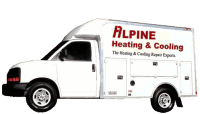Getting Your Home and HVAC Systems Ready for Fall: A Comprehensive Guide
As the leaves change color and temperatures drop, preparing your home and HVAC systems for the fall season becomes essential. Taking some time now to ensure everything is in order can help you stay comfortable, save money, and avoid potential problems when the chill of winter arrives. Here’s a comprehensive guide to help you get your home and HVAC systems ready for fall.
1. Inspect and Service Your HVAC System
Your heating, ventilation, and air conditioning (HVAC) system works hard to maintain a comfortable temperature year-round, so it’s important to give it some attention before fall sets in.
- Schedule a Professional Inspection: Have an HVAC technician conduct a thorough inspection. They will check for any issues, clean the components, and ensure your system runs efficiently. An inspection can identify problems early, potentially saving you from costly repairs during the colder months.
- Replace Air Filters: Dirty air filters can reduce the efficiency of your HVAC system and lower air quality in your home. Replace your air filters at the start of fall and check them monthly. This simple task can improve airflow, maintain system efficiency, and help keep your energy bills in check.
- Test Your Thermostat: Ensure your thermostat is functioning correctly and consider upgrading to a programmable or smart thermostat. This allows you to set schedules, control temperatures remotely, and reduce energy consumption when you’re not home, optimizing your heating system’s efficiency.
2. Seal and Insulate Your Home
A properly sealed and insulated home can make a big difference in energy efficiency and comfort levels.
- Check for Drafts: Inspect windows, doors, and any other openings for drafts. Use weatherstripping and caulk to seal any gaps or cracks. This prevents warm air from escaping and cold air from entering, helping your HVAC system work more efficiently.
- Inspect Insulation: Ensure your home’s insulation is adequate, especially in the attic, basement, and crawl spaces. Proper insulation helps maintain a consistent temperature, reducing the strain on your HVAC system and lowering energy bills.
3. Clean and Inspect Ductwork
Dirty or leaky ductwork can significantly affect the performance of your HVAC system.
- Inspect Ductwork for Leaks: Check for any visible signs of leaks or damage in your ductwork. Sealing any leaks with duct tape or mastic can improve airflow and reduce energy loss.
- Clean the Ducts: Over time, dust, debris, and allergens accumulate in your ducts. Consider having your ductwork professionally cleaned to ensure good air quality and efficient system performance.
4. Prepare Your Furnace
Before the colder months arrive, your furnace needs to be in peak condition.
- Check the Furnace Flame: Ensure the flame in your furnace is blue, indicating it’s burning efficiently. If the flame is yellow or orange, it may indicate a problem, such as a gas leak or dirty burner, requiring professional attention.
- Clear the Area Around the Furnace: Remove any clutter, dust, or flammable materials around your furnace to ensure proper airflow and reduce the risk of fire.
5. Inspect and Clean Your Chimney and Fireplace
If you have a chimney or fireplace, regular maintenance is crucial for safety and efficiency.
- Schedule a Chimney Inspection and Cleaning: A professional chimney sweep can remove soot, creosote, and any obstructions that could cause a fire hazard. Regular cleaning also ensures proper ventilation when using your fireplace.
- Check the Damper: Make sure your fireplace damper opens and closes properly to prevent drafts and maintain energy efficiency.
6. Maintain Your Outdoor Unit
If you have an outdoor HVAC unit, it’s essential to prepare it for the fall season.
- Clear Debris: Remove leaves, twigs, and any debris around your outdoor unit. This helps ensure proper airflow and prevents damage to the system.
- Check the Unit for Damage: Inspect your outdoor unit for any signs of wear and tear, such as rust, cracks, or loose connections. Addressing these issues promptly can prevent further damage.
7. Reverse Ceiling Fans
Ceiling fans aren’t just for summer—they can help keep your home comfortable in the fall and winter, too.
- Reverse the Fan Direction: Most ceiling fans have a switch to change the direction of the blades. In the fall, set your fan to rotate clockwise at a low speed. This creates an updraft, pulling cool air up and pushing warm air down, which helps distribute heat more evenly throughout your home.
8. Inspect Weatherstripping and Door Seals
Keeping cold air out is just as important as keeping warm air in.
- Check Weatherstripping: Inspect and replace any worn or damaged weatherstripping around doors and windows to prevent drafts and heat loss.
- Install Door Sweeps: If you notice drafts under doors, consider installing door sweeps to block out cold air.
9. Check Smoke and Carbon Monoxide Detectors
Safety is paramount, especially when you’ll be using your heating system more frequently.
- Test Detectors: Make sure smoke and carbon monoxide detectors are working correctly. Replace batteries and test each unit to ensure they are functioning properly. Consider installing new detectors if yours are more than 10 years old.
10. Clean Gutters and Downspouts
Fall is known for its beautiful leaves, but those leaves can clog your gutters and downspouts.
- Clear Gutters: Remove leaves, twigs, and debris from your gutters and downspouts to prevent water damage to your roof, siding, and foundation. Proper drainage is essential to avoid leaks and ice dams during winter.
Getting your home and HVAC systems ready for fall is an investment in comfort, safety, and energy savings. By following these steps, you’ll be well-prepared for the colder months ahead, ensuring a cozy and efficient home all season long. Take the time now to inspect, clean, and maintain your home and HVAC systems to enjoy a worry-free fall and winter.
Remember, a little preparation goes a long way! Happy fall! 🍂


